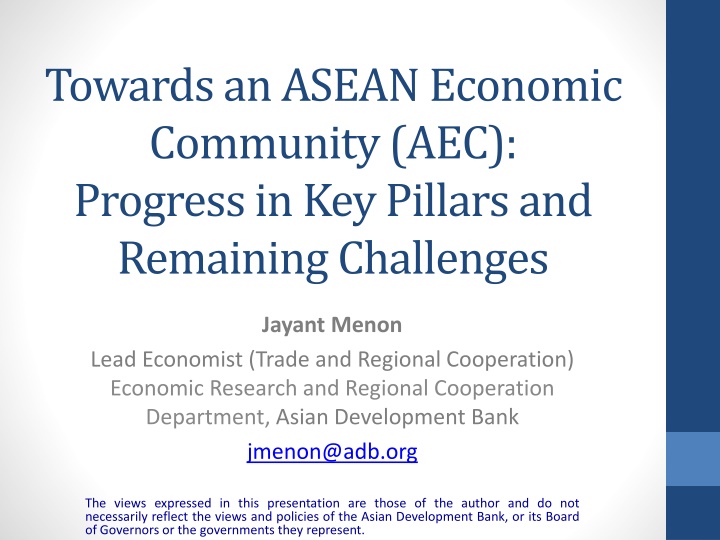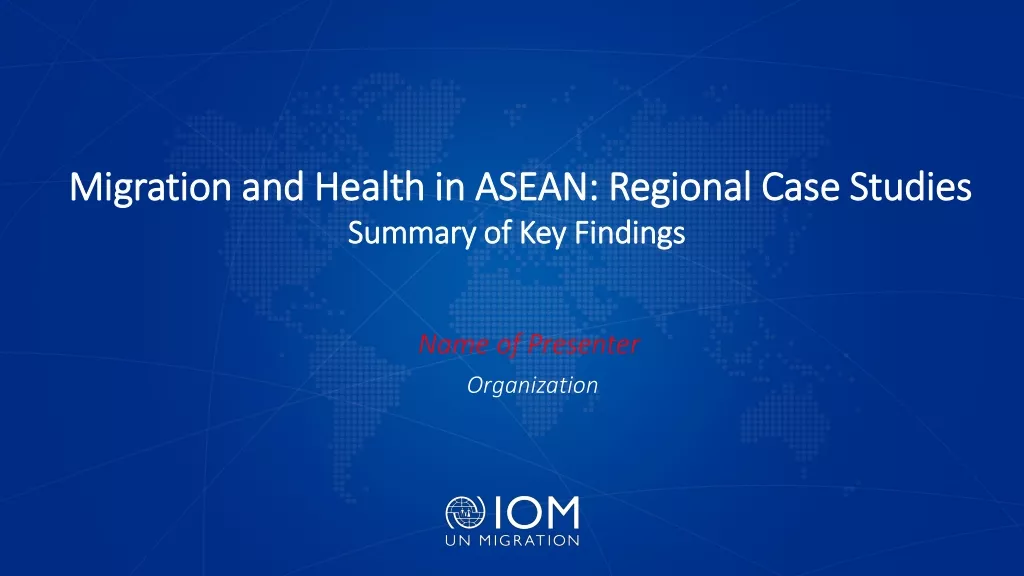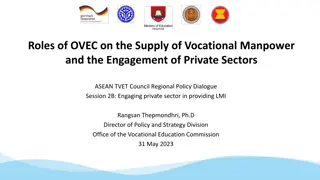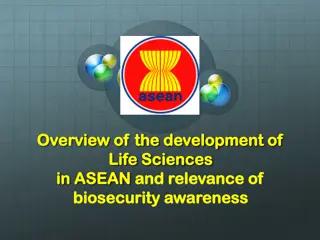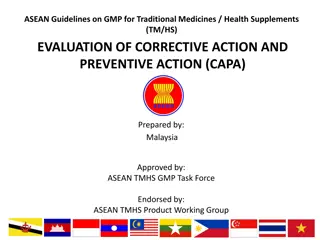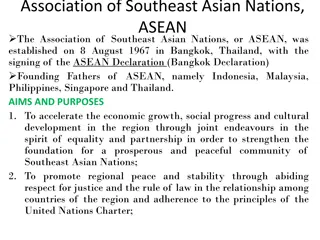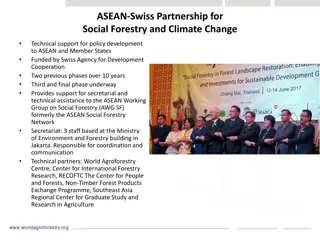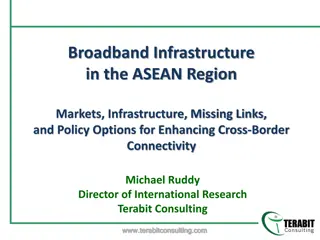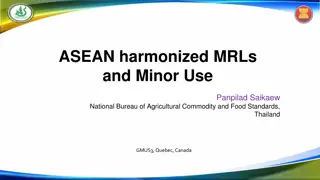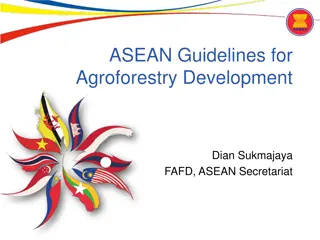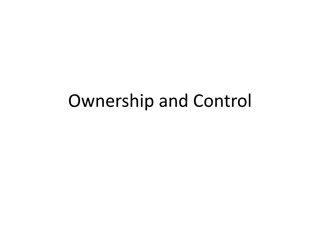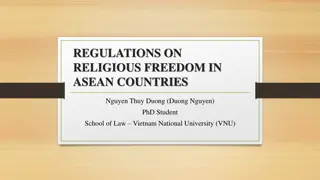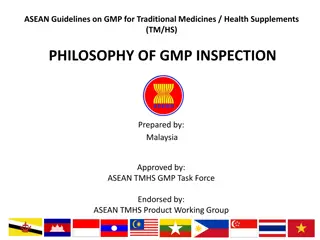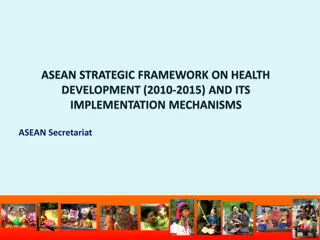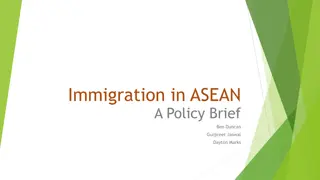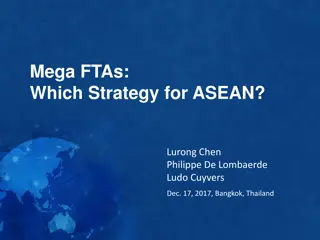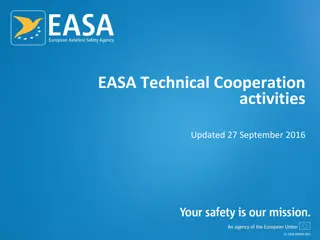Progress and Challenges of ASEAN Economic Community (AEC)
Presentation by Jayant Menon from Asian Development Bank on the progress and challenges of the ASEAN Economic Community (AEC), focusing on key pillars, achievements, remaining bottlenecks, and critical next steps for AEC integration. The presentation outlines the background, AEC scorecard, implementation rates per pillar, and some caveats regarding the monitoring process.
Download Presentation

Please find below an Image/Link to download the presentation.
The content on the website is provided AS IS for your information and personal use only. It may not be sold, licensed, or shared on other websites without obtaining consent from the author.If you encounter any issues during the download, it is possible that the publisher has removed the file from their server.
You are allowed to download the files provided on this website for personal or commercial use, subject to the condition that they are used lawfully. All files are the property of their respective owners.
The content on the website is provided AS IS for your information and personal use only. It may not be sold, licensed, or shared on other websites without obtaining consent from the author.
E N D
Presentation Transcript
Towards an ASEAN Economic Community (AEC): Progress in Key Pillars and Remaining Challenges Jayant Menon Lead Economist (Trade and Regional Cooperation) Economic Research and Regional Cooperation Department, Asian Development Bank jmenon@adb.org The views expressed in this presentation are those of the author and do not necessarily reflect the views and policies of the Asian Development Bank, or its Board of Governors or the governments they represent.
Presentation Outline The Background Measuring Progress: The AEC Scorecard Achievements and Challenges by AEC Pillar Beyond AEC 2015: Critical Next Steps Changing Regional Architecture: RCEP, TPP etc.
The Background Main vehicle prior to AEC has been AFTA - ambitious liberalization program - Completed for the original ASEAN members AEC Pillars: Pillar 1: Single market and production base Pillar 2: Competitive economic region Pillar 3: Equitable economic development Pillar 4: Integration into the global economy Implementation guided by Economic Blueprint, progress measured by AEC Scorecard
The AEC Scorecard Per Chairman s Statement of the 26th ASEAN Summit held in April 2015: ASEAN has fully implemented 458 out of the 506 measures targeted for the period 2008-2015 (90.5% implementation rate) But Statement fails to provide a breakdown of implementation rates per pillar. A more detailed ASEC presentation in 2013 provides an idea of where the bottlenecks lie. 4
The AEC Scorecard Key Deliverables January 2008-March 2013 Of the AEC targets due by March 2013, implementation rates were highest in Pillar 1, followed by Pillars 2, 3, and 4; no explanation for these rates was given. 5 Source: Milo, Melanie. 2013. Linkage between Greater Mekong Subregion Economic Cooperation and ASEAN Economic Community. Presentation at the Mekong Forum 2013: Towards More Inclusive and Equitable Growth in the Greater Mekong Subregion. 11-12 July 2013, Khon Kaen. http://www.mekongforum.com
Some Caveats Scorecard relies on self-assessment may not be balanced Scorecard measures aggregate progress no in-depth analysis of bottlenecks, especially at national level Only two Scorecards have been made public, covering the first two phases of AEC implementation (2008-2009 and 2010-2011)
Pillar 1: Achievements and Challenges Pillar 1 elements: (i) free flow of goods; (ii) free flow of services; (iii) free flow of investments; (iv) freer flow of capital; and (v) free flow of skilled labor Success has been uneven, across elements and sectors Biggest achievements in reducing tariffs Some improvements in trade facilitation and investment liberalization Biggest gaps in liberalizing services and labor flows
Achievements under Pillar 1 Tariffs Import duties for 99.20% and 90.85% of committed tariff lines have been eliminated by ASEAN-6 and CLMV, respectively. On the average, ASEAN member states have 96% Tariff Lines at 0% (MITI, 2015). Trade Facilitation National Single Windows have gone live in the ASEAN-6; ASEAN-6 plus Viet Nam have tested preliminary exchange of trade data and information through the ASEAN Single Window (ASW) Protocol on the Legal Framework to Implement the ASW has been signed Pilot programs for Self-Certification System and ASEAN Customs Transit System have been launched
Achievements under Pillar 1 (cont) Investment Liberalization and Facilitation ASEAN-6 are near achieving international best practices. Deloitte (2014) reports liberalization rates of 90% or more in the Philippines, Malaysia and Cambodia and between 85 89% in Brunei , Lao PDR, Myanmar, Singapore and Thailand. Indonesia and Viet Nam lag behind with 80% or less. Several noteworthy initiatives: (i) 2011 Credit Guarantee and Investment Facility; (ii) $240 billion CMIM swap arrangement; (iii) formation of the ASEAN Exchanges involving the ASEAN-5 and Viet Nam; and (iv) MOU to establish and implement the ASEAN mutual recognition framework for mutual funds.
Achievements under Pillar 1 (cont) Services Liberalization Agreement on mutual recognition agreements (MRAs) or their equivalent for three types of goods and eight professions: architecture, accountancy, surveying, engineering, medical practitioners, dental practitioners, tourism professionals, and nurses Mostly nurses, engineers and architects ASEAN Economic Ministers and the ASEAN Education Ministers endorsed the ASEAN Qualification Reference Framework (AQRF) which will: enable comparisons of qualifications of skilled labor provide a standard for cross-referencing among the different National Qualification Frameworks across ASEAN Member States
Challenges under Pillar 1 Removing barriersto trade in sensitive areas like agriculture, steel and the increasingly important areas of services Improving the domestic regulatory environment, particularly prudential regulation in the case of financial services Removing behind-the-border constraints related to logistics, transport, infrastructure problems, and weak institutions Promoting greater labor mobility, to include unskilled, not just skilled labor
Achievements Under Pillar 2 Eight AMS have enacted competition laws; Cambodia and Lao PDR to do so by December 2015 ASEAN Experts Group on Competition now working on new targets and regional plan of action on competition post-2015 ASEAN Working Group on Intellectual Property Cooperation assessing the implementation of the ASEAN IPR Action Plan 2011-2015
Challenges Under Pillar 2 Biggest challenge still lies in competition policy and IPR both difficult areas of reform Competition policy and IPR protection are essentially national in application Given different levels of development and national interests, cooperation and coordination rather than uniformity in competition and IPR rules are likely to be more achievable as goals
Achievements Under Pillar 3 Some evidence that the process of convergence has begun, as newer members begin to catch up Implementation of flagship projects under the Strategic Action Plan for ASEAN SME Development (2010-2015); successor plan being developed Implementation of ASEAN Framework for Equitable Economic Development (AFEED), adopted in 2011; second phase being considered Some positive results from subregional arrangements such as the Initiative for ASEAN Integration (IAI)
Challenges Under Pillar 3 AEC priority actions under Pillar 3 are useful, but not sufficient Domestic policy actions are also important, particularly investments in social infrastructure, especially in education and health Regional initiatives must be complemented with other elements of an inclusive growth strategy to ensure convergence
Achievements and Challenges Under Pillar 4 The region s openness has enabled a thriving Factory ASEAN 5 ASEAN countries rank among the world s 50 most connected nations, based on the MGI Connectedness Index: Singapore (ranked fourth), Malaysia (18th), Thailand (36th), the Philippines (45th), and Viet Nam (48th) However, there has been a shift from unilateral liberalization to preferential liberalization (through free trade agreements) Two mega-regionals involving ASEAN Member States: Regional Comprehensive Economic Partnership (RCEP) and Trans-Pacific Partnership (TPP) - more later
Achievements and Challenges Under Pillar 4 (con t) Many studies (eg WTO, 2011) confirm the failure of most Asian FTAs to deepen coverage to deal with trade facilitation and behind the border issues Even if these FTAs deepen coverage, the need to be discriminatory in the exchange of concessions suggests problems Unilateral liberalization of trade and FDI should continue to be given priority Multilateral approaches may offer more feasible solutions than regional ones in addressing issues such as competition policy and IPR
Beyond AEC 2015: Critical Next Steps December 31, 2015 will not see ASEAN achieving all of its AEC targets. Given that the deadline is likely to be missed, it is critical to ensure that reforms continue beyond 2015. The flexibility that characterizes ASEAN cooperation and institutional arrangements could give member states a pretext for non-compliance and there are enforcement issues. Giving AEC commitments more teeth is a key challenge. Geo-political issues need to be addressed to ensure peace and stability, which are prerequisites for successful economic integration.
Changing Architecture AEC is not the only game in town Two other significant mega-regionals are the ASEAN+6 RCEP, and the US-led TPP. Also APEC s FTAAP, but early still Mega-regionals partly a response to proliferation of bilateral FTAs involving at least one country from the region
RCEP Same deadline as AEC Like AEC, facing difficulties- India being particularly difficult, and Sino- Japan tensions don t help Focus is to be on harmonization and regulatory convergence Includes PRC but not US
TPP Numerous negotiation rounds since 2010; latest in July 2015 still failed to deliver Labelled a gold standard agreement but likely to be watered down to secure compromises Mainly a bilateral deal between US and Japan with side deals for others
TPP Many countries seeking different exemptions ISDS particularly controversial IP is at its core and problematic SOE reform and changes to government procurement unlikely in Malaysia or Viet Nam Geo-politics at center stage
Thank you! For inquiry or comments, please contact: Jayant Menon Lead Economist (Trade and Regional Cooperation), ERCD Telephone: (63-2) 632-6205 Email: jmenon@adb.org
